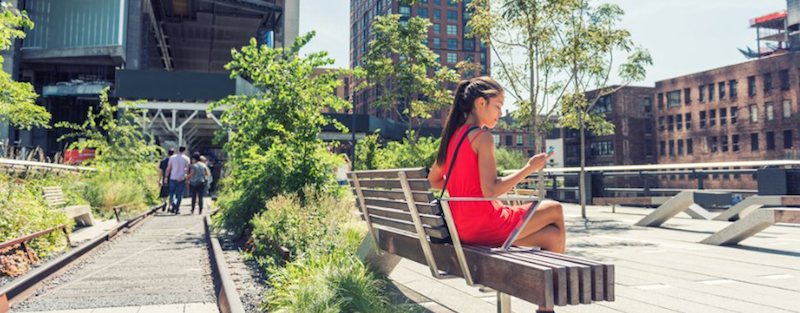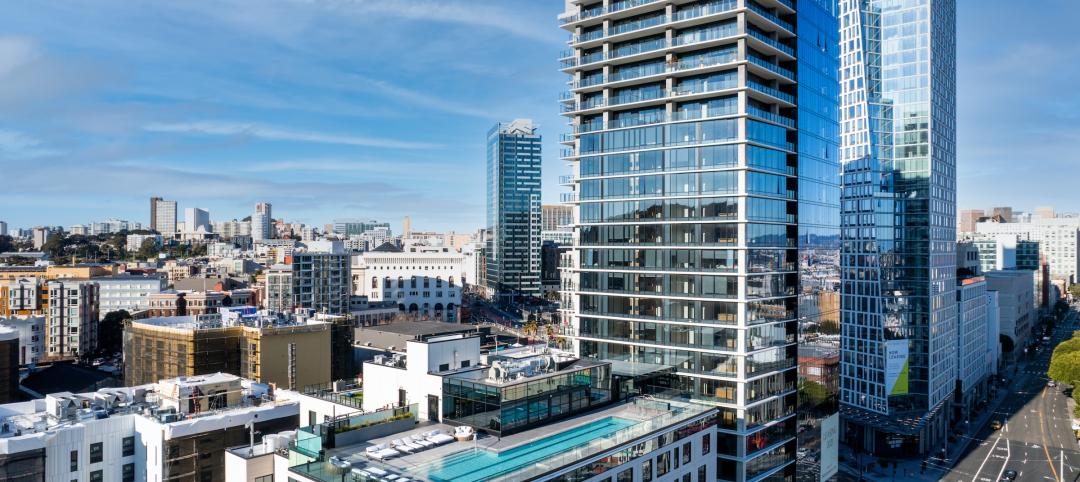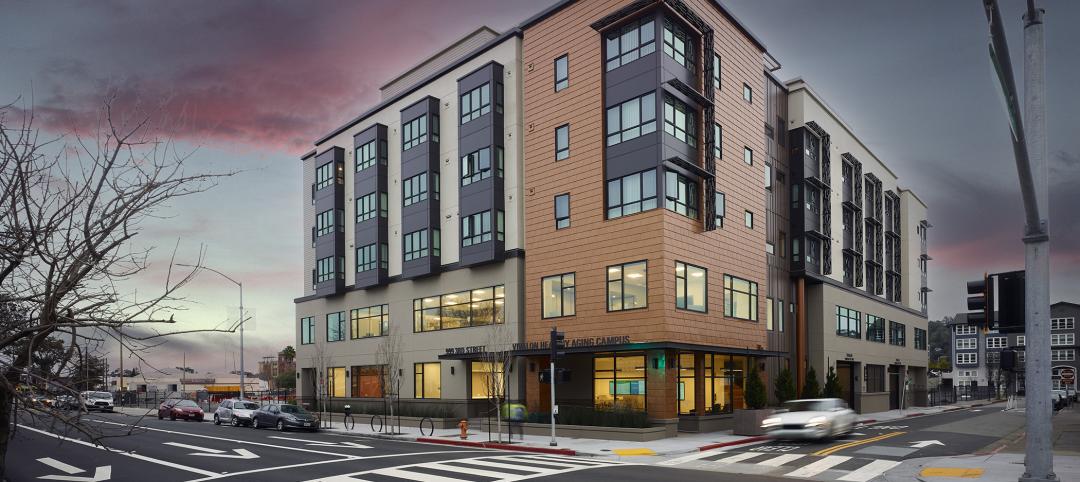As part of its Living Standard initiative, today, the U.S. Green Building Council (USGBC) released a new U.S. public research report titled Standard Issue that sets out to better gauge how the public feels about issues at the core of the green building community’s mission: sustainability, green buildings and the environment. The report takes a closer look at Americans’ views on environmental issues and how the green building industry can be better positioned as a global solution. As part of the report, USGBC commissioned ClearPath Strategies, a global public opinion research company, to conduct qualitative and quantitative research across five regions of the U.S.
“For more than a quarter century now, the USGBC community has worked to prove that buildings are very much living entities that, if created with forethought and compassion, can mitigate climate-related risks,” said Mahesh Ramanujam, president and CEO, USGBC. “But we need to do more. We know that green buildings are only part of the solution to lengthening and bettering the lives of every person on the planet. That’s why the heart of the green building community’s efforts must go beyond construction or efficiency. Instead, our focus must be on what matters most within our buildings: people. This research questions our conventional wisdom and experience and helps inform our strategy for the future.”
USGBC is working to elevate the role of green buildings beyond the environment and economy and focus on the personal health and well-being benefits they provide. The report found that while three-quarters of respondents said environmental problems are very or somewhat important to them, they do very little to address the problems in their own lives, considering it too daunting a task.
The research also shows that people want to live in a healthy environment, but don’t typically associate green buildings with being part of the solution. When asked which terms most strongly relate to the environment and being green, only 11% said green buildings.
When considering the connection between green buildings and personal health, almost a third (32%) indicated they have direct, personal experience with bad health associated with poor environments or living situations. In addition, when ranking how healthy their local environment is on a scale of 1-10, 65% gave it less than an eight.
The research suggests there is a gap between the enormity of the problem and how people seek to address it in their daily lives, and that the green building community can mobilize and inspire change by connecting messaging to healthy outcomes for human beings.
“When people think about emissions, they think about cars, power plants and industries. They rarely think about buildings, leaving the green building community with a messaging mountain to climb,” continued Ramanujam. “We are not reaching the broader population effectively enough to change their behavior or decisions on the scale necessary to combat climate-related risks.”
Through these research findings, USGBC has identified key areas to talk about how green buildings can help, who they help and why they are necessary:
— Promote Healthy Outcomes: Sustainable cities improve people’s lives and better designed spaces help people live longer, healthier and happier lives. Toxin-free materials, good air ventilation and air-purifying plants, all together in a home or workplace, can improve physical health and comfort by reducing symptoms of allergies and respiratory related illnesses like asthma.
— Future Generations: At the rate the planet is warming, catastrophe is almost certain. If we continue to do nothing, our children will ask, ‘How could you do this to us?’ And they will be right. Our future generations deserve to live in a healthy, thriving environment where they live, learn, work and play. The time to act is now.
— Planetary Stakes: With more natural disasters, drought, fires and hunger, our global environment is getting worse every day. Now United Nations climate scientists report that if we do not make dramatic changes in how we live and the fuel we consume, we will have an environmental catastrophe by 2030.
This is the first of several public research reports that will be released through the Living Standard campaign, which was launched at the 2018 Greenbuild International Conference and Expo in Chicago and is focused on the belief that storytelling can lead to a more sustainable world. The campaign aims to highlight stories – big and small – that capture how USGBC, the LEED green building rating system and other sustainability programs are raising the quality of life for people around the world.
The Living Standard study included both qualitative and quantitative research conducted in the fall of 2018. The study included focus groups with millennials, community opinion formers, young parents, commercial and residential developers, and a survey of the general public at large.
Visit livingstandard.org to learn more, join the campaign and submit stories. USGBC will be releasing additional research reports quarterly in 2019, each with a particular issue and regional focus.
Related Stories
Green | Jun 11, 2024
Tool helps construction and renovation projects with CalGreen compliance
One Click LCA recently launched a new software tool to help building teams comply with Part 11, Title 24, of the California Code of Regulations—CALGreen. The regulation is the nation’s first state-mandated green building code to include embodied carbon emission control as a mandatory component, effective from July 1, 2024.
Mass Timber | May 31, 2024
Mass timber a big part of Western Washington University’s net-zero ambitions
Western Washington University, in Bellingham, Wash., 90 miles from Seattle, is in the process of expanding its ABET-accredited programs for electrical engineering, computer engineering and science, and energy science. As part of that process, the university is building Kaiser Borsari Hall, the 54,000-sf new home for those academic disciplines that will include teaching labs, research labs, classrooms, collaborative spaces, and administrative offices.
MFPRO+ New Projects | May 29, 2024
Two San Francisco multifamily high rises install onsite water recycling systems
Two high-rise apartment buildings in San Francisco have installed onsite water recycling systems that will reuse a total of 3.9 million gallons of wastewater annually. The recycled water will be used for toilet flushing, cooling towers, and landscape irrigation to significantly reduce water usage in both buildings.
MFPRO+ News | May 28, 2024
ENERGY STAR NextGen Certification for New Homes and Apartments launched
The U.S. Environmental Protection Agency recently launched ENERGY STAR NextGen Certified Homes and Apartments, a voluntary certification program for new residential buildings. The program will increase national energy and emissions savings by accelerating the building industry’s adoption of advanced, energy-efficient technologies, according to an EPA news release.
HVAC | May 28, 2024
Department of Energy unveils resources for deploying heat pumps in commercial buildings
To accelerate adoption of heat pump technology in commercial buildings, the U.S. Department of Energy is offering resources and guidance for stakeholders. DOE aims to help commercial building owners and operators reduce greenhouse gas emissions and operating costs by increasing the adoption of existing and emerging heat pump technologies.
Resiliency | May 24, 2024
As temperatures underground rise, so do risks to commercial buildings
Heat created by underground structures is increasing the risk of damage to buildings, recent studies have found. Basements, train tunnels, sewers, and other underground systems are making the ground around them warmer, which causes soil, sand, clay and silt to shift, settle, contract, and expand.
Senior Living Design | May 16, 2024
Healthy senior living campus ‘redefines the experience of aging’
MBH Architects, in collaboration with Eden Housing and Van Meter Williams Pollack LLP, announces the completion of Vivalon’s Healthy Aging Campus, a forward-looking project designed to redefine the experience of aging in Marin County.
Sustainability | May 10, 2024
Perkins&Will’s first ESG report discloses operational performance data across key metrics
Perkins&Will recently released its first ESG report that discloses the firm’s operational performance data across key metrics and assesses its strengths and opportunities.
Sustainable Development | May 10, 2024
Nature as the city: Why it’s time for a new framework to guide development
NBBJ leaders Jonathan Ward and Margaret Montgomery explore five inspirational ideas they are actively integrating into projects to ensure more healthy, natural cities.
K-12 Schools | May 7, 2024
World's first K-12 school to achieve both LEED for Schools Platinum and WELL Platinum
A new K-12 school in Washington, D.C., is the first school in the world to achieve both LEED for Schools Platinum and WELL Platinum, according to its architect, Perkins Eastman. The John Lewis Elementary School is also the first school in the District of Columbia designed to achieve net-zero energy (NZE).

















